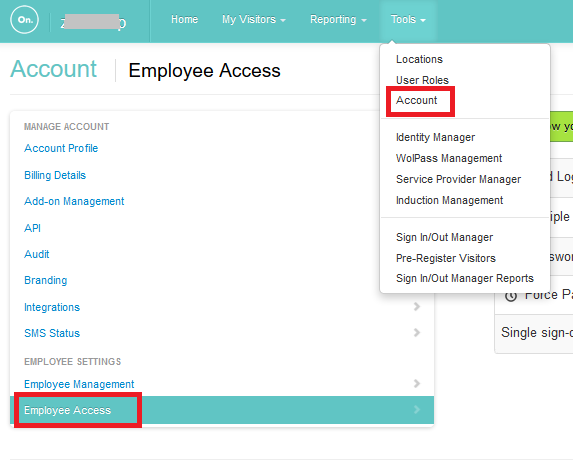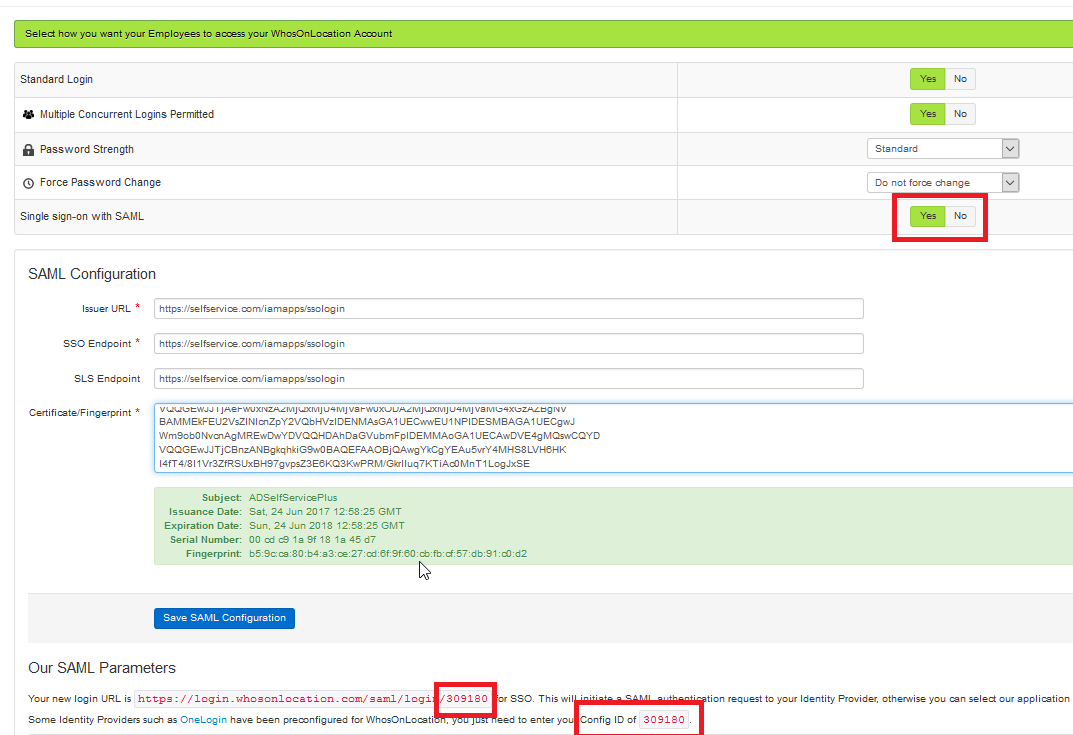Now, log in to your WhosOnLocation administrator account.
Navigate to Tools → Account → Employee Access.

Toggle the Single sign-on with SAML switch to Yes. This will display the SAML Configuration fields.
In the Issuer URL and SSO Endpoint, enter the Login URL value that you had saved in Step 5 of Prerequisite.
In Certificate/Fingerprint field, enter the FingerPrint value that you had saved in Step 5 of Prerequisite.
Click Save SAML Configuration.
Under the Our SAML Parameters section, copy the Config ID value. This value will serve as the input for the Config ID field in ADSelfService Plus
